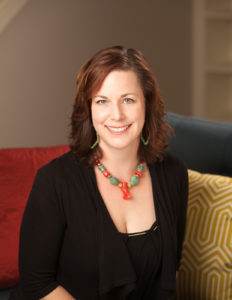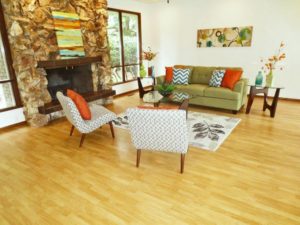Choosing colors for your home is more than using your “favorites” or following the latest trends. There is science to using color, because it not only affects the look of a room, but it also affects the people in it. When it comes to color, it is wise to ask the experts.

Locally, that means a color consultation with Dr. Lisa Poundstone, owner of Design Smart Home Staging & Redesign who has a PhD in science and has been a home staging and design consultant for thousands of homes in the South Sound. Lisa’s rare combination of disciplines provides her with unique insight into the best colors to use in a home.
“Color is something you can analyze because it has been proven that it affects us psychologically and physiologically, stimulating different parts of our mind to elicit both positive and negative feelings,” explains Lisa, who many refer to as the “Design Doctor.”
“There is one effect in using harmonious colors together and a different one if you use colors that are direct opposites. It is scientific and you can register the feeling you create with either combinations.”
Lisa and her Design Smart team use their expertise in color to captivate buyers’ attention in a home sale.

“In home staging, we use color to help people remember a home, as well as evoke specific physiological reactions. We keep a consistent color theme throughout most of the house for a cohesive feel so the overall physiological reaction remains as buyers move through the home. Pops of color imprint the rooms on the mind so buyers remember the home.”
The former college science professor and current Best of South Sound designer, describes some of the meaning and effects of basic colors:
Blue is the color of trust, honesty, loyalty and responsibility and is the most universally-liked color. It is a calm, relaxing color and reduces stress, making it a great choice for bedrooms.
Green, a mixture of blue and yellow, can be a calming color that refreshes from its blue side or one that renews and restores depleted energy from its yellow side. The color of balance, harmony and growth, green is the easiest color on the eye.
Purple represents royalty, spirituality and imagination. It allows us to get in touch with our deeper thoughts. Purple can stimulate creativity in small doses, but large amounts can instill moodiness.
Red is an appetite and conversation stimulant and represents power and is best used in moderation as an accent in living rooms, dining rooms and kitchens. Red can create passion in the bedroom. But too much can generate hatred and agitation.

Yellow, in the right color, can be uplifting. It is the most difficult color for the eye to take in and can be overpowering if overused. It enhances concentration and speeds metabolism, so it is a good color for the kitchen, dining areas and offices.
Orange is a mixture of red and yellow, with all their warmth and comfort, creating optimism. Some oranges, such as the color of pumpkins and fall leaves, are appetite and conversation stimulants, great for the dining room and kitchen.
Design Smart can help you decide on the colors that suit your home with advice on coordinated window treatments, furniture, pillows, lighting, art and accessories, for a color palette that not only revitalizes your home, but also the people living there.
Dr. Lisa Poundstone, ASP, PhD is the owner of Design Smart Home Staging & Redesign in Olympia WA. Her company has been voted the Best of South Sound in Interior Design for the last four consecutive years. Lisa is also a columnist for the area daily newspaper and writes a blog called The Design Doctor. Contact her at 360-480-5810 or visit her website.



















































